Manaslu Circuit Trek: A Tapestry of Heights, Landscapes, and Cultures
Nepal, a haven for trekking enthusiasts, unveils its best-kept secret—the Manaslu Circuit Trek. This...
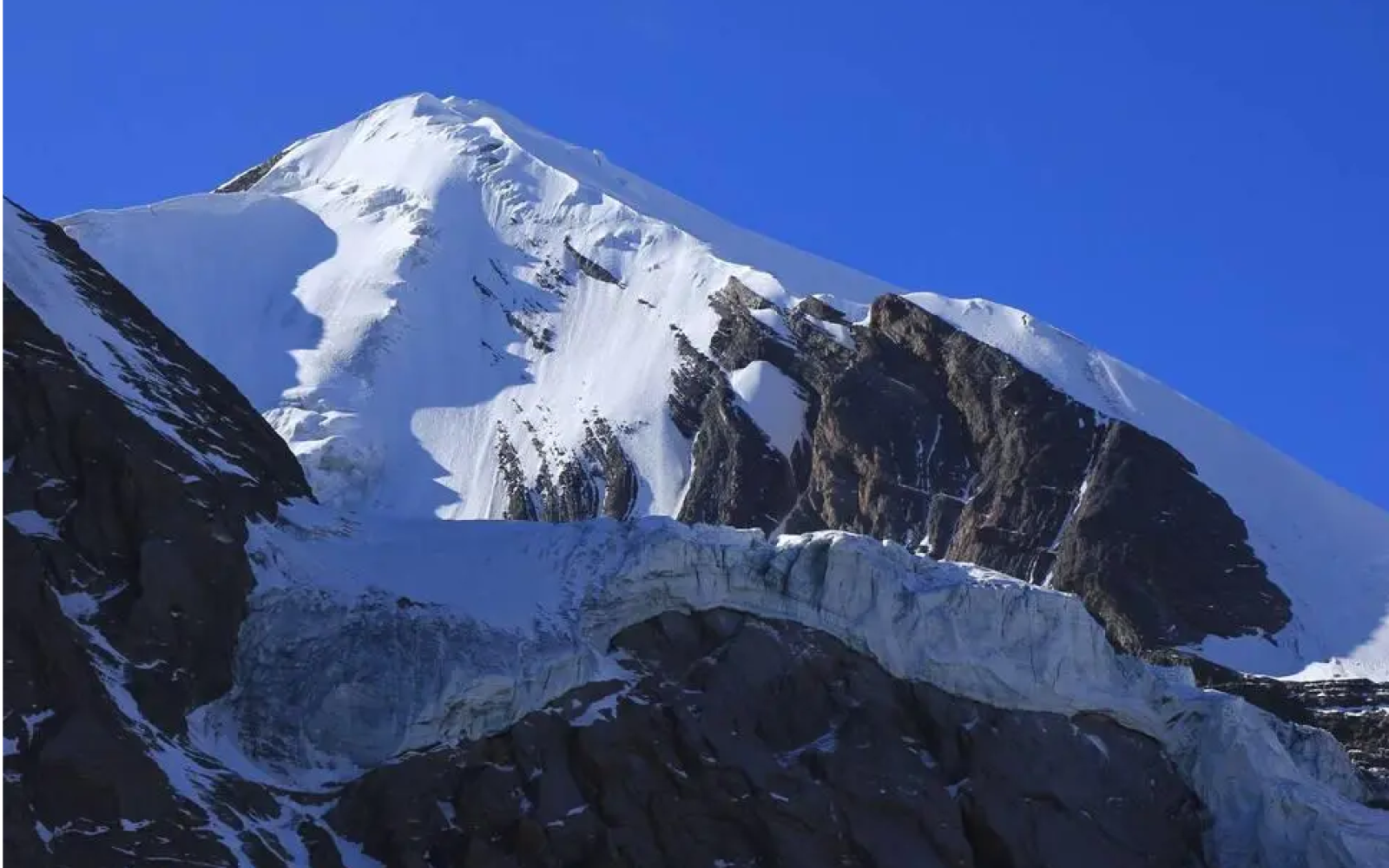
Trekking in Nepal is an experience like no other. As the gateway to the Himalayas, Nepal offers a rare combination of dramatic mountain scenery, rich cultural encounters, and accessible trails that attract adventurers from all over the world. The country's diverse geography includes everything from lush subtropical forests to barren alpine deserts, and its trail network spans from popular classics like the Annapurna and Everest regions to remote, lesser-known circuits like Manaslu and Dolpo. Each trek offers unique highlights—be it panoramic views of 8,000-meter peaks, high mountain passes, or encounters with diverse ethnic groups such as the Gurung, Sherpa, and Tamang communities. Whether you’re an experienced hiker or a first-time trekker, there’s a route in Nepal that suits your level of adventure and interest.
But trekking in Nepal is more than just a physical journey—it’s a cultural and spiritual odyssey. The trails pass through centuries-old villages where life moves at a slower pace and traditions are deeply rooted in the rhythms of nature. Along the way, trekkers are welcomed into teahouses and family-run lodges, where warm hospitality and home-cooked meals provide a sense of connection far from the comforts of home. The spiritual presence of Buddhism and Hinduism is also strongly felt, with fluttering prayer flags, sacred mani walls, and ornate monasteries dotting the paths. All of this makes trekking in Nepal not just a scenic adventure, but a deeply enriching human experience. With Himalayan Forever Treks as your guide, you’ll explore these magnificent trails with the knowledge, care, and cultural respect that enhances every step of your journey.
At Himalayan Forever Treks, we specialize in crafting authentic, unforgettable journeys into the heart of the Himalayas. As a locally based company with years of experience guiding trekkers through Nepal’s stunning landscapes, our mission is to match each adventurer with the trek that best suits their goals, fitness level, and desire for cultural immersion. With so many legendary routes to choose from, we understand how important it is to pick the one that aligns with your aspirations—and we're here to help you do just that.
In this guide, we’ll walk you through two of Nepal’s most iconic trekking routes: the Annapurna Circuit and the Manaslu Circuit. While both offer incredible scenery, cultural depth, and Himalayan grandeur, each trek has its own character, challenges, and rewards. By understanding the unique aspects of each, you can make an informed decision about which trail will give you the most fulfilling experience.
Brief Overview of Nepal as a Trekking Destination
Nepal is often regarded as the ultimate destination for trekking, thanks to its breathtaking combination of towering Himalayan peaks, rich cultural heritage, and welcoming local communities. Nestled between China and India, Nepal is home to eight of the world’s ten highest mountains, including Mount Everest and Annapurna. The country’s dramatic topography spans from lowland jungles to alpine landscapes, making it a diverse playground for outdoor enthusiasts of all levels.
But trekking in Nepal is about more than just physical adventure—it's also a deeply immersive cultural experience. As you walk through remote villages, interact with local people, and witness ancient Buddhist and Hindu traditions, you gain insight into a way of life that has remained largely unchanged for centuries. Whether you’re drawn by the challenge of high-altitude passes or the tranquility of rural mountain life, Nepal offers something for every type of traveler.
Importance of Choosing the Right Trek for Your Goals and Experience
Choosing the right trek can make the difference between a rewarding adventure and a challenging misstep. Every trek in Nepal varies not just in scenery and altitude, but also in level of remoteness, accessibility, and physical demand. Understanding your personal goals—whether you’re seeking cultural immersion, solitude, panoramic views, or a physical challenge—will help narrow your choices to a trek that delivers exactly what you’re looking for.
For example, seasoned trekkers looking for a rugged and less-traveled path may lean toward the Manaslu Circuit, known for its remote beauty and fewer crowds. Meanwhile, those who prefer a more established trail with a wide variety of landscapes and teahouse accommodations might be drawn to the Annapurna Circuit. At Himalayan Forever Treks, we take the time to understand your preferences and match you with a route that aligns with your fitness, timeline, and adventure expectations—so that every step you take brings you closer to the Himalayan experience of your dreams.
Annapurna Circuit: Key Features and Highlights
The Annapurna Circuit is one of Nepal’s most iconic and versatile treks, known for its dramatic scenery, diverse ecosystems, and cultural richness. Stretching between 160–230 kilometers depending on the route variation, it circles the Annapurna Massif, offering trekkers a dynamic journey through subtropical forests, terraced farmland, alpine meadows, and high-altitude deserts reminiscent of Tibet. One of the most thrilling highlights is crossing the Thorong La Pass at 5,416 meters, one of the highest trekking passes in the world. Along the way, you’ll encounter charming villages, cascading waterfalls, and majestic views of Annapurna I, Dhaulagiri, Machapuchare, and Manaslu.
Culturally, the Annapurna Circuit is a journey through multiple ethnic regions, including Gurung, Thakali, and Tibetan-influenced communities. This diversity is reflected in the architecture, local foods, and religious practices you’ll experience on the trail. With well-established teahouse infrastructure, a wide range of itinerary options, and ample opportunities for acclimatization, the Annapurna Circuit is accessible to a broad range of trekkers. It’s a classic route for those looking for a well-supported adventure with both natural and cultural depth.
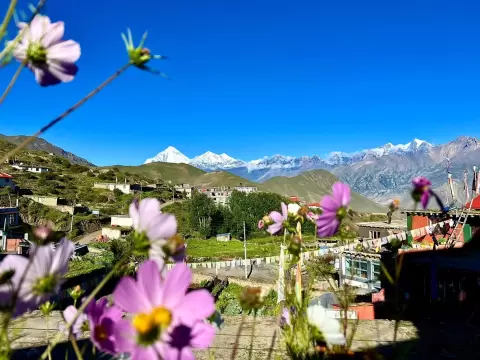
Manaslu Circuit: Key Features and Highlights
The Manaslu Circuit is a hidden gem that has grown in popularity while still retaining its sense of remoteness and wilderness. This trek circles Mount Manaslu (8,163m), the world’s eighth-highest peak, offering raw Himalayan beauty and a more off-the-beaten-path experience compared to the more commercialized Annapurna and Everest regions. One of its most captivating features is the crossing of Larkya La Pass (5,160m), a stunning and challenging high-altitude traverse that rewards trekkers with dramatic views of surrounding peaks like Himlung, Cheo, and Kang Guru.
What sets Manaslu apart is its isolation and strong Tibetan Buddhist cultural influence. Villages like Samagaun and Samdo offer insights into high-altitude life and traditional Tibetan customs, often overlooked on busier trails. The terrain varies from lowland rice paddies to glacial valleys and high mountain passes, with fewer trekkers and quieter trails. While the infrastructure is improving, accommodations are more basic than on the Annapurna Circuit, which adds to its appeal for those seeking adventure, solitude, and authenticity in one of Nepal’s most preserved trekking regions.

How to Get There
Reaching the Annapurna Circuit is relatively straightforward and accessible. Most treks begin in Besisahar, a town about a 6-7 hour drive from Kathmandu. With the expansion of road networks, some trekkers choose to start higher up the trail in Chame or Jagat, using a jeep to shorten the trek duration. The trek can be exited from Jomsom or Tatopani, where domestic flights and road connections offer flexible itinerary planning.
The Manaslu Circuit begins in Soti Khola, accessible by a 7-9 hour drive from Kathmandu via Arughat. The roads are more rugged, and transportation is less frequent, which reflects the remoteness of the region. The trek concludes in Dharapani, where the trail meets part of the Annapurna Circuit, offering options to extend or exit the route. While the journey to the trailhead is longer, it enhances the feeling of entering a pristine, untouched wilderness.
Permit Requirements and Restrictions
The Annapurna Circuit is located in the Annapurna Conservation Area, and trekkers are required to obtain an ACAP Permit (Annapurna Conservation Area Permit) and a TIMS card (Trekkers' Information Management System). These permits are easy to acquire in Kathmandu or Pokhara and do not require special restrictions, making the region accessible for both solo and group trekkers.
In contrast, the Manaslu Circuit is a restricted trekking area, which means there are more stringent permit requirements. Trekkers must obtain a Restricted Area Permit (RAP) for Manaslu, an MCAP (Manaslu Conservation Area Permit), and an ACAP, as part of the trail overlaps with the Annapurna region. The RAP is only issued to groups of at least two trekkers accompanied by a government-licensed guide and registered trekking agency—like Himalayan Forever Treks. These restrictions help preserve the environment and culture of the region and contribute to the safety and regulation of tourism in remote areas.
Guided vs. Independent Trekking Options
The Annapurna Circuit is ideal for both independent and guided trekkers. With a well-developed teahouse infrastructure, clear signage, and abundant resources along the route, many experienced hikers feel comfortable doing the trek without a guide. However, hiring a guide or porter can enhance the experience by providing deeper cultural insight, logistical support, and added safety—especially at high altitudes or during unpredictable weather.
The Manaslu Circuit, on the other hand, requires all trekkers to go with a licensed guide and registered agency, due to its restricted status. This makes it less flexible for solo travelers but provides a more secure and culturally rich experience. Guides not only assist with navigation and logistics but also help facilitate meaningful interactions with local communities and ensure compliance with regulations. With Himalayan Forever Treks, you'll have expert local guides who bring the trail to life with stories, cultural context, and practical support, allowing you to immerse yourself fully in the journey without worrying about the details.
Average Number of Days Required
The Annapurna Circuit Trek typically takes around 17 days, depending on where you start and finish, as well as your acclimatization and side-trip preferences. Some trekkers choose to include rest days in places like Manang or visit the Tilicho Lake, which can extend the journey. The availability of road access in certain sections has shortened the traditional circuit, allowing for route adjustments depending on your time frame. However, to truly experience the full diversity of landscapes and culture, 17 days is considered ideal for a complete and rewarding Annapurna Circuit adventure.
The Manaslu Circuit Trek generally spans 16 days, covering the journey from Soti Khola to Dharapani, including essential acclimatization days. Despite being slightly shorter in duration, the Manaslu trek often feels more physically and mentally demanding due to its remote nature, fewer facilities, and longer stretches between villages. The trek includes rest days in Samagaun or Samdo for acclimatization before tackling the challenging Larkya La Pass. The compact itinerary packs in rich cultural exposure and dramatic scenery without overwhelming your schedule, making it a great choice for those with limited time seeking a deep Himalayan experience.
Daily Elevation Gain and Terrain Comparison
The Annapurna Circuit features a varied terrain that transitions from subtropical valleys to alpine meadows and glacial passes. Daily elevation gain is generally moderate, especially in the early stages of the trek. However, as you ascend toward Thorong La Pass (5,416m), the trail becomes steeper and more physically demanding. The path is well-maintained with stone steps, suspension bridges, and gradual switchbacks, making it accessible even for trekkers with moderate experience—as long as they are prepared for the altitude.
In contrast, the Manaslu Circuit features more rugged and remote terrain, with longer and steeper ascents, narrower trails, and fewer facilities. The daily elevation gain can be more intense in the early stages as you ascend through deep river gorges and climb steadily toward the Tibetan plateau. The final approach to Larkya La Pass (5,160m) involves a steep ascent and descent on rocky, often snowy trails, making it technically more challenging than the Annapurna Pass crossing. Trekkers need to be prepared for longer hiking days and more uneven terrain, often with less opportunity to rest or find amenities.
Physical Demands and Acclimatization Factors
While both treks involve high-altitude trekking, the Annapurna Circuit is slightly more forgiving in terms of physical demands due to its better infrastructure and more gradual ascent. Acclimatization is built into the itinerary, with key rest days in places like Manang (3,519m) that allow your body to adapt. The availability of varied accommodations, hot meals, and even bakeries along the way makes the physical toll more manageable. Still, the crossing of Thorong La Pass is no small feat and requires excellent fitness and careful acclimatization to avoid altitude sickness.
The Manaslu Circuit, on the other hand, demands a higher level of endurance, mental stamina, and preparedness. The trail is less developed, and some sections require walking 6–8 hours per day on steep, isolated paths. Acclimatization stops in Samagaun (3,530m) and Samdo (3,860m) are crucial, and due to the trail's remoteness, there is less access to medical care or rescue services in case of emergencies. This trek is better suited to those with prior high-altitude trekking experience or those willing to train rigorously beforehand. The reward, however, is unmatched solitude, dramatic alpine scenery, and a raw Himalayan adventure.
Annapurna Circuit Trekking Outline Itinerary
Manaslu Circuit Trekking Outline Itinerary
Landscape Diversity: Mountains, Rivers, Forests, and Villages
The Annapurna Circuit is famous for its extraordinary diversity of landscapes in a relatively compact route. Starting in the lush, low-altitude valleys of Besisahar, the trail gradually winds through dense rhododendron forests, terraced rice fields, alpine meadows, and arid high-altitude plateaus that resemble Tibetan desert-scapes. This remarkable ecological variation offers trekkers a constantly changing backdrop, with every day revealing new geographical contrasts. The highlight is undoubtedly the dramatic ascent to Thorong La Pass, where trekkers are surrounded by a 360-degree panorama of Annapurna I, Dhaulagiri, Nilgiri, and other snow-capped giants.
Villages along the Annapurna Circuit are frequent and varied in appearance and setting, from green hillsides to stark high-altitude terrain. The Kali Gandaki Gorge, one of the deepest in the world, adds another dramatic element to the route. Natural hot springs in Tatopani, apple orchards in Marpha, and high alpine settlements like Manang create a rich and immersive environment. This trail is ideal for those who want to see a broad spectrum of Nepal’s geographical beauty in a single trek.
The Manaslu Circuit, while more remote, offers equally stunning and often more untouched scenery. The trek begins in the subtropical forests of Soti Khola, with cascading waterfalls, lush jungles, and narrow river valleys carved by the Budhi Gandaki River. As you ascend, the environment shifts from verdant hillsides to expansive glacial valleys and rugged mountain passes. The final approach to Larkya La Pass opens into a spectacular alpine world with sweeping views of Manaslu (8,163m) and neighboring peaks like Himlung and Cheo Himal. Unlike the busier Annapurna region, the remoteness here makes the scenery feel raw, wild, and untouched.
The trail through the Manaslu region also passes through remote Tibetan-style villages, with dramatic river crossings, yak pastures, and fewer signs of modern development. The isolated nature of the trek enhances the feeling of deep immersion in nature. If you're seeking solitude and more pristine mountain vistas, the Manaslu Circuit offers a visual and emotional experience that feels like stepping back in time.
Cultural Exposure: Ethnic Groups, Monasteries, and Traditions
The Annapurna Circuit offers a culturally rich experience thanks to its route through several distinct ethnic regions. In the lower elevations, you'll meet Gurung and Magar communities, known for their hospitality and connection to the Gurkha soldier tradition. As you ascend, Thakali and Tibetan-influenced groups dominate the landscape, especially around Manang and Muktinath. These villages are home to ancient monasteries, colorful chortens (stupas), and spinning prayer wheels that speak to centuries of Buddhist heritage.
Temples and religious sites like Muktinath, a sacred pilgrimage site for both Hindus and Buddhists, add a spiritual dimension to the journey. Teahouses often double as informal cultural centers, where trekkers can learn about local customs, enjoy traditional foods like dal bhat and apple pie, and sometimes participate in festivals or community gatherings. While more commercialized due to its popularity, the Annapurna Circuit still provides meaningful cultural connections, especially if you stay longer in villages or travel with a knowledgeable guide.
In contrast, the Manaslu Circuit offers a more intimate and authentic cultural experience, largely due to its restricted access and fewer visitors. The trek follows an ancient salt-trade route close to the Tibetan border, and the influence of Tibetan Buddhism is deeply ingrained in local life. Villages like Samagaun, Lho, and Samdo are ethnically Tibetan, with traditional stone houses, yak herders, and vibrant monasteries that are still active centers of spiritual life. You’ll often hear the chanting of monks, see prayer flags fluttering in the wind, and witness rituals tied to the lunar calendar.
Because of the isolation and limited modernization, the traditions here are remarkably well-preserved. You'll pass by intricately carved mani walls, cross over suspension bridges adorned with prayer flags, and perhaps visit monasteries such as Pungyen Gompa, nestled beneath the glaciers of Manaslu. Guided trekking enhances this cultural interaction, as local guides can interpret the significance of rituals, beliefs, and architecture. If cultural depth and authenticity are high on your list, the Manaslu Circuit offers one of the richest and most untouched cultural experiences in all of Nepal.
Popularity of Each Trail
The Annapurna Circuit is one of Nepal’s most popular treks and has attracted trekkers from around the world for decades. Its widespread reputation, accessibility, and extensive infrastructure mean it sees significant foot traffic, particularly during peak seasons—March to May and September to November. Certain areas, especially near Manang, Thorong La Pass, and Jomsom, can become quite busy, with numerous trekking groups converging at the same teahouses and trail junctions. While this popularity has benefits—like well-maintained trails and lively multicultural interactions—it also means the Annapurna Circuit is less suited for those seeking solitude.
That said, parts of the Annapurna Circuit still offer quiet moments, especially if you trek in the shoulder seasons or take alternate routes like Tilicho Lake or detours to Upper Pisang and Nar Phu Valley (with an additional permit). For travelers who enjoy meeting fellow trekkers from around the world and appreciate a social, dynamic atmosphere, the Annapurna Circuit provides an ideal blend of nature, culture, and community.
[plan-my-trip]
In contrast, the Manaslu Circuit is far less crowded, primarily due to its restricted status and more demanding nature. Even in high season, it’s common to walk for hours without encountering another group, especially in the upper regions beyond Namrung. This sense of isolation and raw wilderness defines the trek’s atmosphere and appeals to those seeking a more contemplative, immersive experience. The limited number of permits and the requirement for guided trekking naturally regulate the number of visitors, preserving the trail’s untouched quality.
The result is a quieter, more personal journey where trekkers can fully connect with their surroundings and local communities. If your goal is to experience the Himalayas away from the crowds, with time to reflect and absorb the environment without distraction, the Manaslu Circuit offers a tranquil and deeply rewarding trekking experience.
Teahouse Availability and Quality
On the Annapurna Circuit, accommodation is plentiful and relatively well-developed. Villages along the trail often have multiple teahouses catering to different budgets—from basic lodges to more comfortable accommodations with hot showers, attached bathrooms, Wi-Fi, and charging stations. These facilities make the trek more accessible, especially for those who prefer some creature comforts or are new to long-distance trekking. The long history of tourism in this region has led to high service standards and consistent support along the trail.
The availability of lodging also means that planning is flexible—you can decide how far to trek each day based on your pace. During peak season, however, popular spots like Manang, Yak Kharka, and Muktinath can get fully booked, so advance planning or early arrival is recommended. Overall, the Annapurna Circuit offers some of the best and most convenient trekking infrastructure in Nepal.
The Manaslu Circuit has seen growing improvements in infrastructure, but it remains more basic and rustic compared to the Annapurna Circuit. While teahouses are available in every major village, choices are often limited to one or two lodges, and amenities are more modest. Expect shared bathrooms, wood-heated dining rooms, and simple dormitory-style or private rooms with thin walls and limited power access. Hot showers and charging facilities may be available for an extra fee, but they're not guaranteed everywhere.
Despite its simplicity, this more authentic style of accommodation is part of the Manaslu Circuit’s appeal. You’ll often stay in family-run lodges where the experience feels intimate and community-based. Your guide will typically call ahead to secure rooms, and the personal relationships between guides and teahouse owners often translate into a warm welcome and more attentive service.
Food Options and Trail Support Facilities
Food along the Annapurna Circuit is surprisingly diverse due to the region’s popularity. Teahouses serve a mix of traditional Nepali meals—such as dal bhat (rice, lentils, and curry)—and Western dishes including pancakes, pasta, fried rice, and even pizza in some areas. Bakeries are common in places like Manang and Marpha, where you can enjoy apple pies, coffee, and fresh bread. Most teahouses have printed menus, and meals are freshly prepared with local ingredients, offering good energy for long trekking days.
Trail support is strong, with pharmacies, gear shops, ATMs, and mobile reception available in some villages, especially in the lower and mid-elevations. This makes the Annapurna Circuit more forgiving for trekkers who need occasional resupply or minor medical care.
On the Manaslu Circuit, food options are more limited and traditional. Meals are usually based around dal bhat, Tibetan bread, tsampa (barley flour), noodles, and potatoes, reflecting the local agricultural produce. Some teahouses offer momos (dumplings), soups, and basic snacks, but the variety is less compared to Annapurna. That said, the food is hearty, nourishing, and freshly made, often with ingredients grown in nearby fields. Eating here feels more like sharing a home-cooked meal than dining at a commercial lodge.
Trail support facilities are sparse—no ATMs, limited mobile service, and only a few basic shops selling essentials. You’ll need to carry any personal medications or backup gear in advance. However, with the support of a knowledgeable guide from Himalayan Forever Treks, logistics like lodging, meals, and emergency planning are well managed, allowing you to enjoy the journey without stress.
Budgeting for Each Trek: Permits, Accommodation, Food, Guides
The Annapurna Circuit is generally more budget-friendly and flexible when it comes to planning costs. Permit requirements include the Annapurna Conservation Area Permit (ACAP) and a TIMS (Trekkers' Information Management System) card, totaling around USD $40–50. These permits are easy to obtain independently through tourism offices in Kathmandu or Pokhara. Accommodation costs range from $5–$15 per night, with food averaging $20–$30 per day, depending on your appetite and food preferences. If you hire a guide ($25–$35/day) or porter ($20–$25/day), costs rise but can significantly improve your experience and safety.
Because the Annapurna region has a competitive tourism market, prices for meals and rooms remain reasonable even in remote areas. Budget-conscious travelers can often complete the trek for around $800–$1,200 USD over 17 days, including guides and permits. Those opting for a more premium or guided package through a company like Himalayan Forever Treks will receive logistical support, safety planning, and deeper cultural context at a slightly higher but well-justified price.
In contrast, the Manaslu Circuit involves higher baseline costs due to its restricted area status and required guide accompaniment. You’ll need multiple permits: the Manaslu Restricted Area Permit (RAP)—which ranges from $100–$150 depending on the season, plus ACAP and MCAP (Manaslu Conservation Area Permit), costing an additional $30–$50 combined. A government-licensed guide is mandatory, and you must be part of a registered agency group (minimum two trekkers), which adds to the organizational cost.
Accommodation on the Manaslu trail tends to be simpler, but prices are slightly higher than in Annapurna due to the remoteness—$7–$20 per night, depending on altitude and location. Food also costs more in the upper regions, with meals averaging $25–$35 per day. Total costs for a 16-day trek typically range from $1,200–$1,800 USD, including guide, porter, permits, and logistics. While Manaslu is more expensive overall, it offers a more exclusive, secluded experience with fewer tourists and richer cultural immersion.
Annapurna Circuit Trek 17 Days
Includes
Doesn't Include
Manaslu Circuit Trek 16 Days
Includes
Doesn't Include
Seasonal Considerations
Nepal has two main trekking seasons: pre-monsoon (spring) from March to May, and post-monsoon (autumn) from September to November. These periods offer the most stable weather, clear skies, and comfortable temperatures, making them ideal for both the Annapurna and Manaslu circuits.
Spring brings blooming rhododendron forests, especially in the lower Annapurna regions, and excellent views of snow-capped peaks. However, spring can also be hazier than autumn due to moisture in the air. Autumn is widely considered the best season, with crisp mountain air, golden landscapes, and minimal rainfall. It’s also the busiest time on the trails, particularly for the Annapurna Circuit, so early booking is advised.
[plan-my-trip]
The Manaslu Circuit, because of its higher and more rugged terrain, is especially beautiful in late September to early November, when the monsoon has cleared and the skies are stunningly clear. In spring, the valleys come alive with greenery, but higher altitudes can still be cold and snowbound in early March.
Weather Patterns and Trail Conditions
In both circuits, winter (December to February) brings snow and freezing temperatures at high altitudes. While it is possible to trek during this time with proper gear and experience, Thorong La and Larkya La passes can become impassable due to heavy snow, and many teahouses in higher villages close for the season. For those seeking complete solitude and a challenge, winter trekking is an option—but it comes with increased risk and requires professional planning.
Monsoon season (June to August) is not recommended for either circuit. Heavy rainfall leads to landslides, leeches, and poor visibility. While the higher regions may stay drier, the lower trails become muddy and treacherous. In Manaslu, the narrow Budhi Gandaki gorge becomes especially dangerous during the rainy season.
For the best experience, plan your trek with Himalayan Forever Treks during autumn (Sept–Nov) or spring (Mar–May) to enjoy optimal conditions, vibrant landscapes, and safe, rewarding mountain travel.
| Feature | Annapurna Circuit | Manaslu Circuit |
| Scenery | Diverse: subtropical forests, high mountains, alpine desert | Wild and raw: gorges, glacial valleys, dramatic high peaks |
| Cultural Experience | Gurung, Magar, Thakali, Tibetan - influenced; more commercial | Deeply Tibetan culture, authentic, remote village life |
| Trail Popularity | Very popular and sometimes crowded | Quiet and less - traveled |
| Accommodation | Wide range of teahouses; comfortable and competitive | Fewer lodges; more basic but intimate |
| Accessibility | Easy road access; flexible entry / exit points | Longer, rougher transport to trailhead |
| Permit Requirements | Simple: ACAP + TIMS (~$40 – 50) | Complex: RAP, MCAP, ACAP (~$130 – 200), requires guide and agency |
| Guide Requirement | Optional (recommended) | Mandatory licensed guide and minimum of two trekkers |
| Physical Difficulty | Moderate to challenging; gradual acclimatization | More strenuous; remote and higher physical demand |
| Budget | Budget - friendly and flexible | Higher overall cost due to permits, guide, logistics |
| Best Season | March – May & Sept – Nov | March – May & Sept – Nov (fewer crowds even in peak season) |
[plan-my-trip]
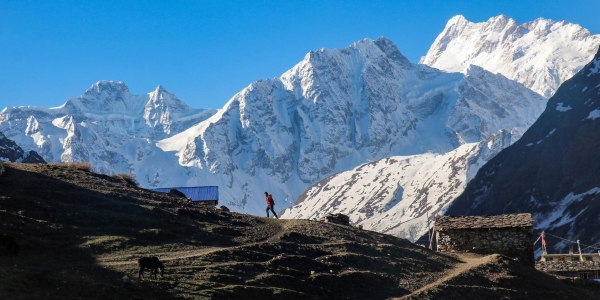
Nepal, a haven for trekking enthusiasts, unveils its best-kept secret—the Manaslu Circuit Trek. This...
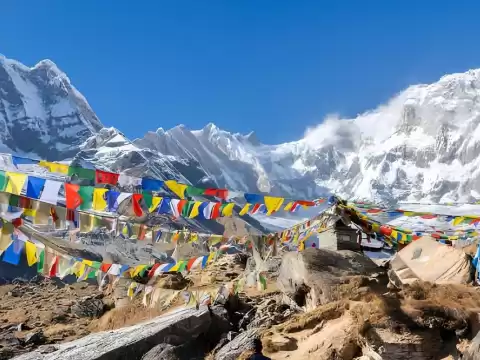
The Annapurna Circuit, nestled in the heart of the Nepalese Himalayas, is renowned as one of the wor...
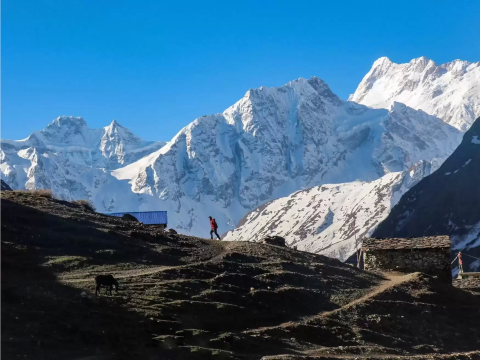
The Manaslu Circuit Trek is an off-the-beaten-path adventure that offers breathtaking views, rich cu...
